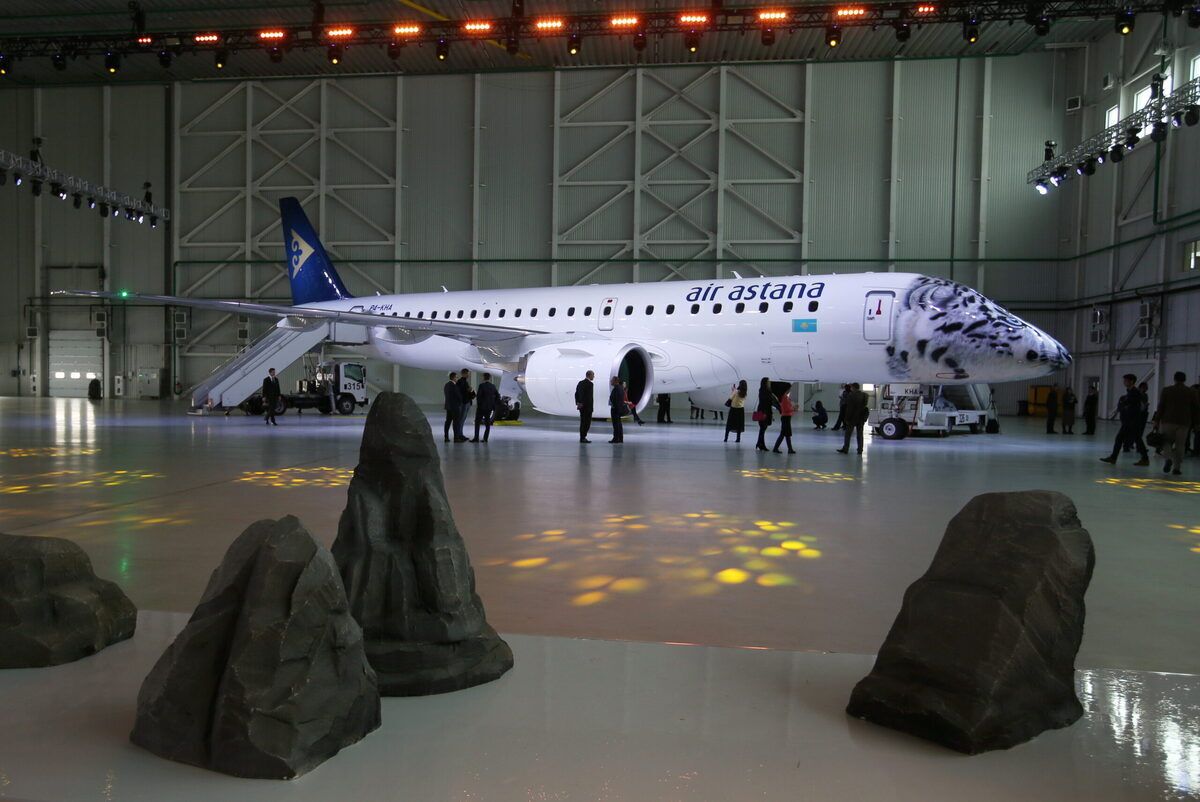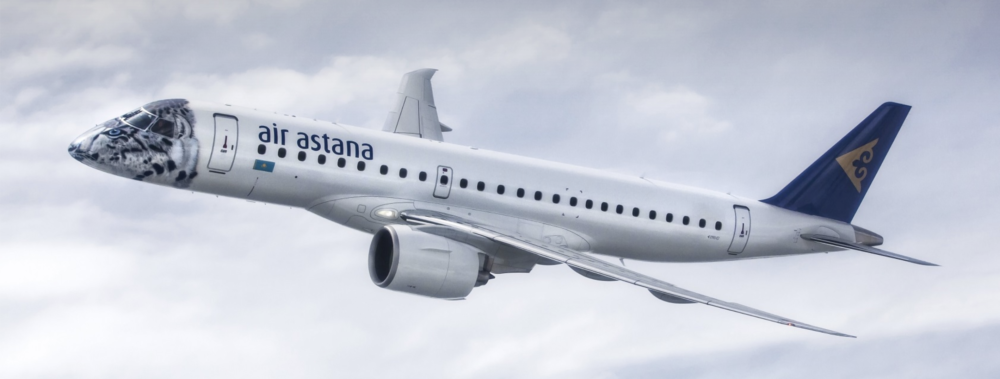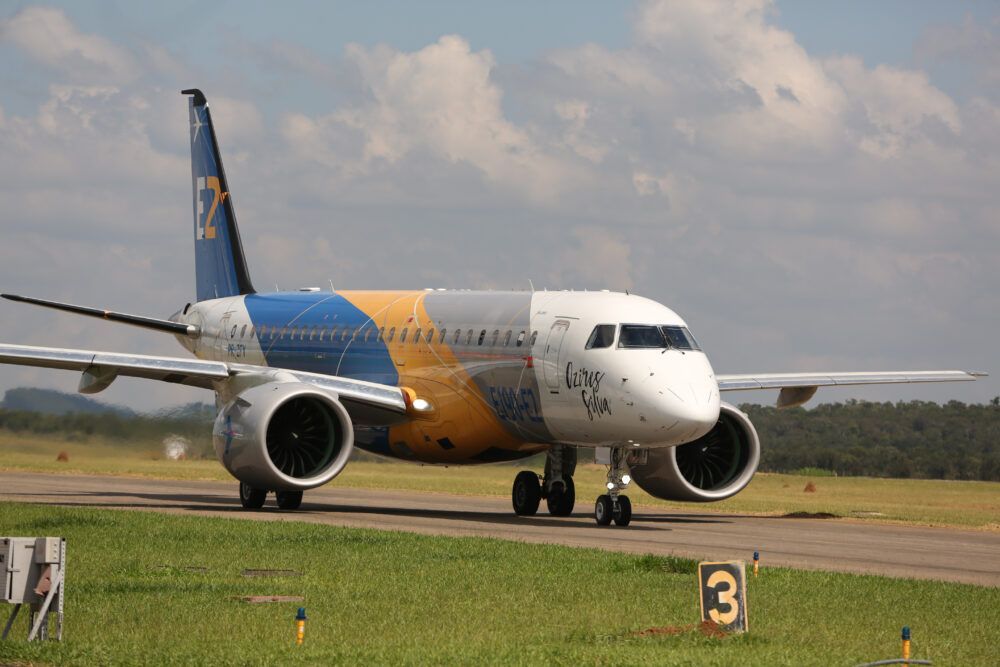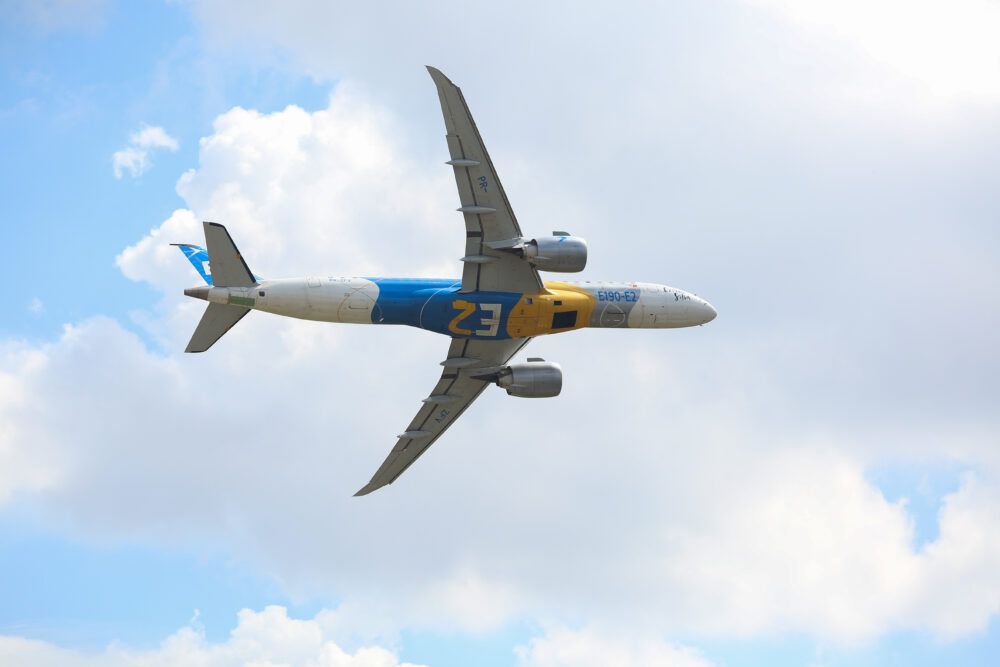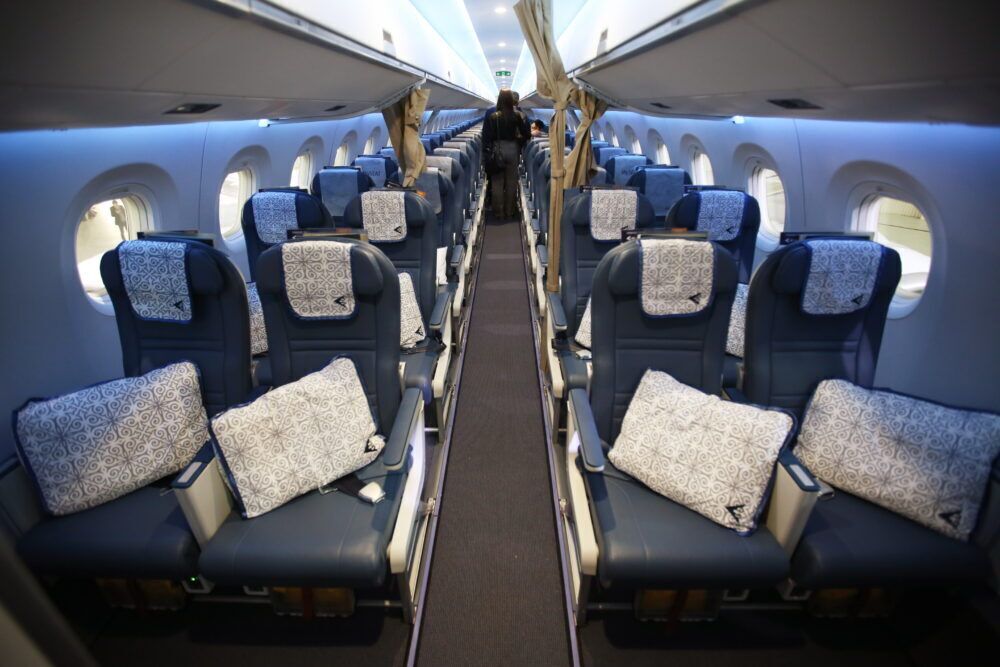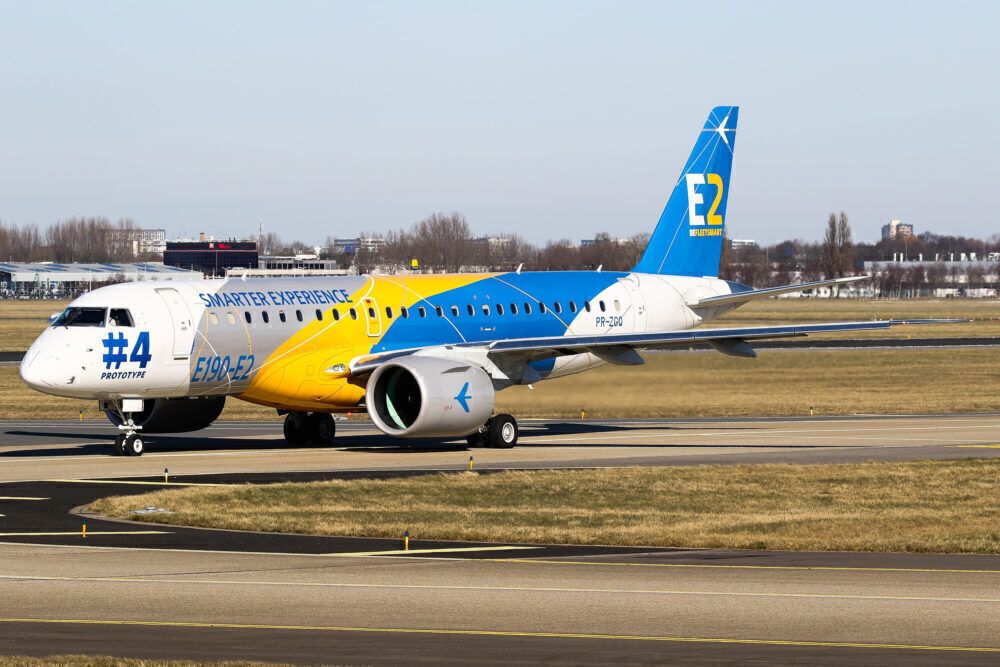In an interesting turn of events, Air Astana has filed a lawsuit against the Brazilian aircraft manufacturer Embraer over issues relating to the Embraer E190-E2. Air Astana is seeking damages due to its need to ground its E190-E2s over technical problem, claiming that Embraer was not entirely forthcoming over the aircraft and its related issues. Embraer maintains that it is not in the wrong.
Air Astana files a lawsuit against Embraer
On July 2nd, Kazakh carrier Air Astana filed a lawsuit against Embraer over issues stemming from the Embraer E190-E2 fleet. Air Astana alleges that Embraer did the following in its complaint:
- Poorly designed and integrated key components and systems on the aircraft, making it unreasonably susceptible to inflight system/component failures and consequent emergencies
- Did not understand the interoperation of key systems within the aircraft conveyed to Air Astana, leading to multiple inflight emergencies
- Could not document remediation steps required when flight crews encountered inflight system/component failures, placing Air Astana flight crews and passengers at unacceptable risk of injury or death
- Failed to disclose or document critical differences between the new aircraft and predecessor versions of the same aircraft family, thus dangerously minimizing suggested or required flight crew training
- Denied the existence of, or unreasonably delayed remediation of, dangerously inadequate design, engineering, and documentation decisions
Air Astana has put forth these allegations in relation to the Embraer E190-E2 fleet, which is Embraer's latest generation of the famous Embraer E-Jets flying around the world.
Stay informed: Sign up for our daily and weekly aviation news digests.
What is the issue?
Air Astana claims its E2 jets have experienced "multiple inflight software and mechanical failures." The first one detailed in the complaint is from June 22nd, 2019. An Air Astana flight operating from Tashkent, Uzbekistan, to Almaty, Kazakhstan, received an anti-icing system failure warning.
The crew attempted to solve the issue inflight. However, this caused both of the E2s bleed air valves to switch off and become latched in the off position, leading to a drop in cabin pressure. The crew then deployed the oxygen masks and then had to descend.
On descent, the crew received a warning that the pressurization level of the cabin was significantly higher than it should have been for the aircraft's altitude. Eventually, the crew safely made it down to 10,000 feet, and the crew made a safe emergency landing in Shymkent, Kazakhstan.
Embraer did issue a service bulletin in the wake of this incident. The aircraft manufacturer released an update to the aircraft's software, where Air Astana claims it found a flaw leading to this issue.
The second incident occurred on September 26th, 2020. An Air Astana flight flying domestically between Kyzylorda and Almaty received an inflight alert of smoke in one of the aircraft's electronic bays. Following the Embraer-provided procedure, the crew sequentially removed power from all electrical components and buses. This lead to the deployment of the ram air turbine.
The crew diverted. However, Air Astana claims that the pilots were forced to land without weather radar, wind shear detection, traffic collision avoidance system, autothrottle, autopilot angle of attack limiter, and flight director while also losing the ability to transfer fuel from the plane's center tank. According to the airline, this strains the pilots trying to divert in the different geographies.
Embraer concluded in this instance that the jet had sent off erroneous error messages. Embraer acknowledged that the sensor was not able to differentiate between dust and smoke adequately.
The third incident came on November 9th, 2020. A crew flying a domestic passenger flight from Aktau to Nur-Sultan faced a message during descent indicating that the hydraulic fluid temperature in the number 3 hydraulic system had increased above safe levels. A subsequent message appeared that the pressure in that same system had dropped too low. A total of 11 warnings appeared.
The crew declared an emergency and worked through the checklists before landing safely. A subsequent investigation found that the warnings stemmed from the failure of an alternating current motor pump, causing the generator control unit to isolate and lose energy, leading to multiple failures.
In addition to these three incidents, Air Astana claims that several flights experienced altitude changes without any pilot input. This includes an incident on May 6th, 2020, when an E2 experienced a downward pitch at 13,000 feet. Another E2, on July 22nd, 2020, experienced an upwards pitch, climbing at 2,500 feet per minute at an elevation of 5,900 feet without crew input.
Air Astana grounded its fleet
Internally, Air Astana reviewed the Embraer fleet and grounded the jets on December 15th, 2020. On May 25th, 2021, the Aviation Administration of Kazakhstan formed a commission to investigate the Embraer E2s. Embraer advises that the planes are back in service now.
The airline had concerns over the E2s operations and took them to Embraer while also seeking compensation for losses, costs, and expenses resulting from the grounding. According to data from ch-aviation.com, Air Astana has five Embraer E190-E2s in its fleet.
Embraer stands its ground
In a statement to Reuters, Embraer stated it would "vigorously defend" the lawsuit and rejects Air Astana's claim for compensation. The airline manufacturer maintains that Air Astana unilaterally decided to ground the jets.
In addition, Embraer maintained that the issues did not constitute an immediate safety risk and that in each of the incidents, the aircraft was able to land safely. Embraer also noted that the type is still flying at several other airlines around the world.
Embraer provided the following statement to Simple Flying:
A Kazakhstan based airline, Air Astana, has filed a legal action against Embraer in the State of
New York, based on contract and warranty claims. Embraer denies that it has breached any
obligations to Air Astana and will vigorously defend against all claims asserted.
In November 2020 an Air Astana E190-E2 experienced a technical issue with a component.
While issues such as this do occasionally occur, at no point did this constitute an immediate
safety risk and the aircraft landed safely.
In accordance with standard industry procedures, Embraer informed the component supplier
and airworthiness authorities. The issue was addressed via an Information Bulletin which set a
reduced replacement time for the component, which was relayed to all operators. This
solution was adopted by ANAC, the Brazilian regulation authority, which issued an
Airworthiness Directive for the global E2 fleet.
Air Astana is claiming compensation for its unilateral decision to suspend aircraft operations.
Air Astana was the only airline that suspended use of E2 aircraft, and they did so only
temporarily and have since resumed all operations.
Safety is the number one priority for Embraer. Embraer recognizes that this is a hugely
challenging time for our industry, and it has and will continue to assist all operators as much as possible in these difficult times. Embraer has a reputation for going ‘above and beyond’ in
service to its customers, and the company has already dedicated many resources to assist Air
Astana. Nonetheless, Embraer looks forward to presenting its case in court.
What will come of this?
Air Astana has put forth its complaint. Embraer will now have an opportunity to respond in detail to Air Astana's complaint. From there, multiple scenarios could play out. The two parties could settle this outside of court and put the matter to an end, or they could go to court, which could be a long and drawn-out process.
Embraer has touted its E2 aircraft as the next generation of regional aircraft to help airlines reach new efficiency and customer comfort standards. This case will be closely watched to see what comes out of it and if it has an impact on either Embraer or the E2.
What do you think about the Air Astana-Embraer lawsuit? Let us know in the comments!

